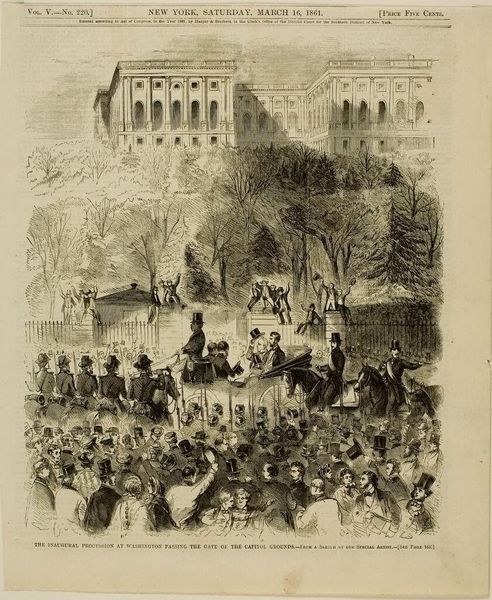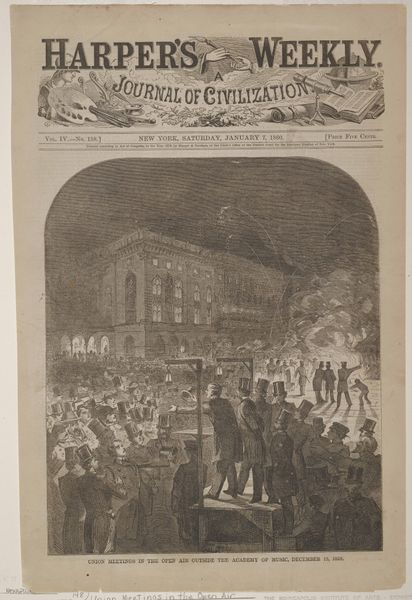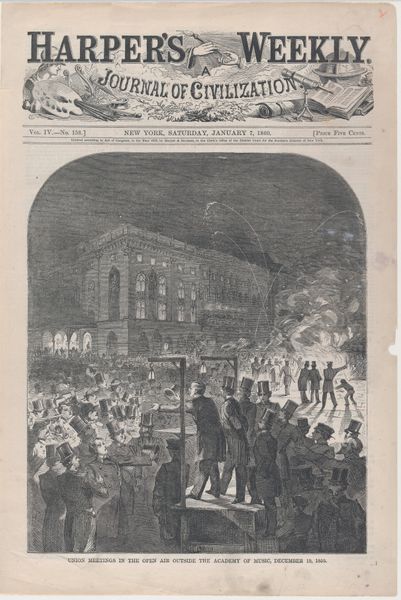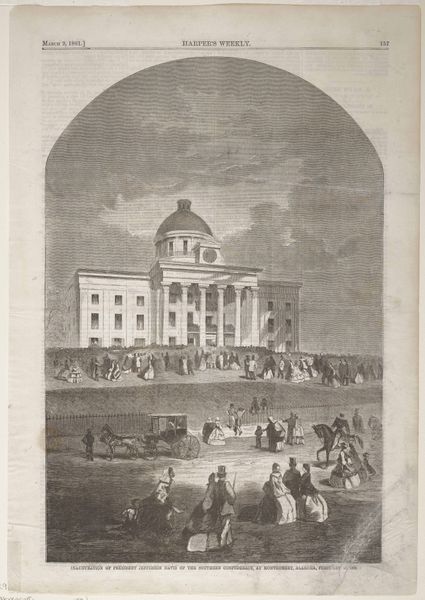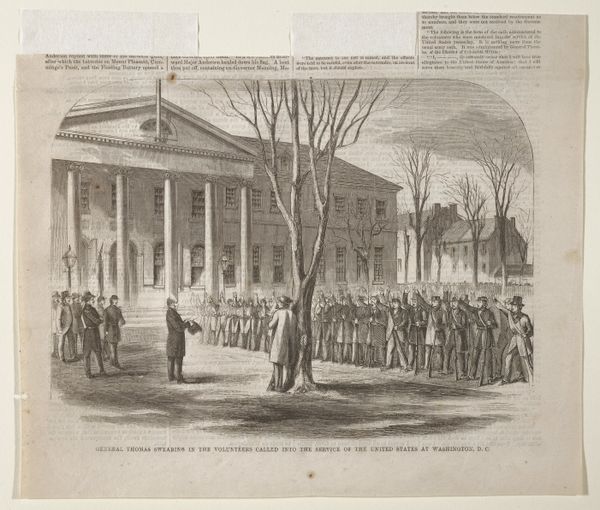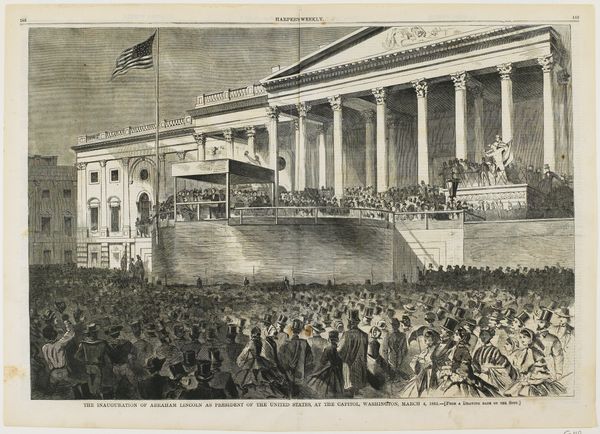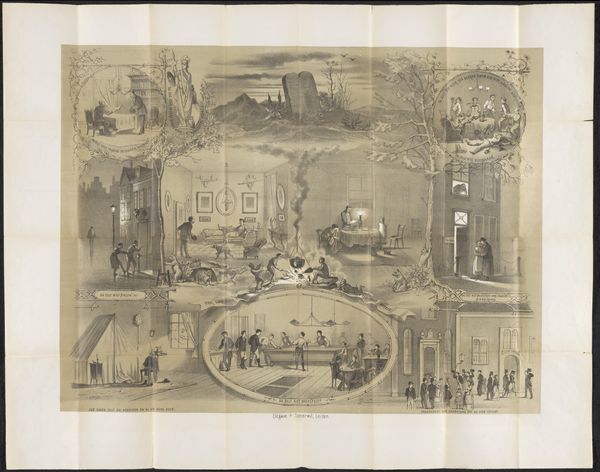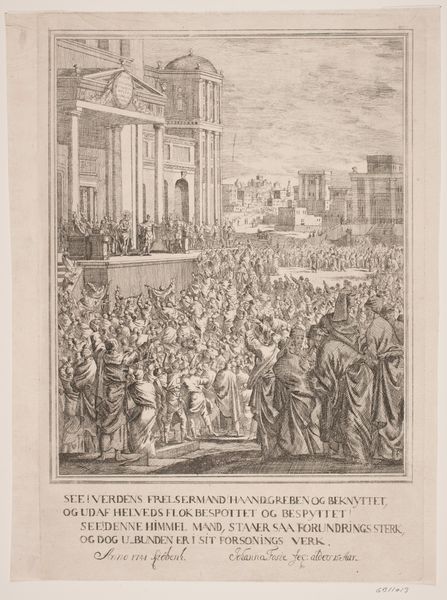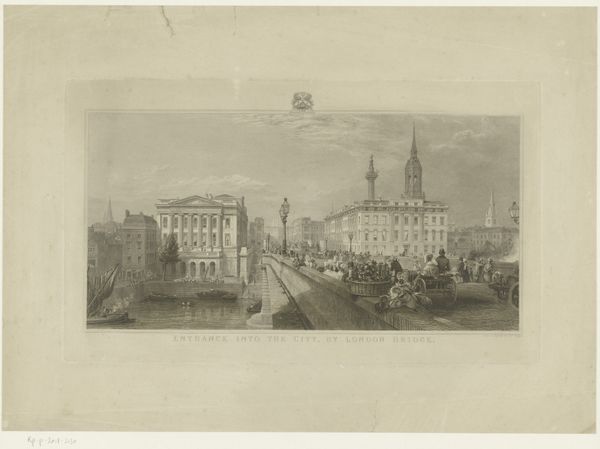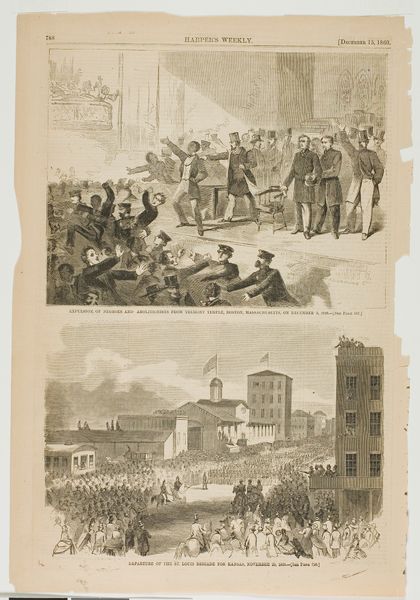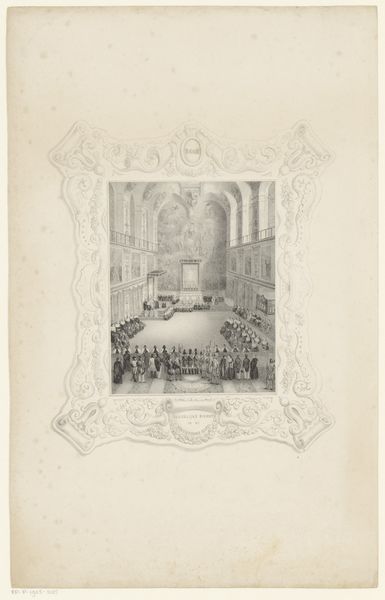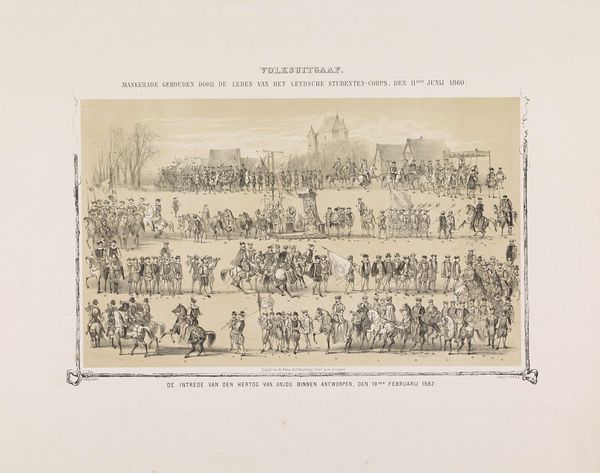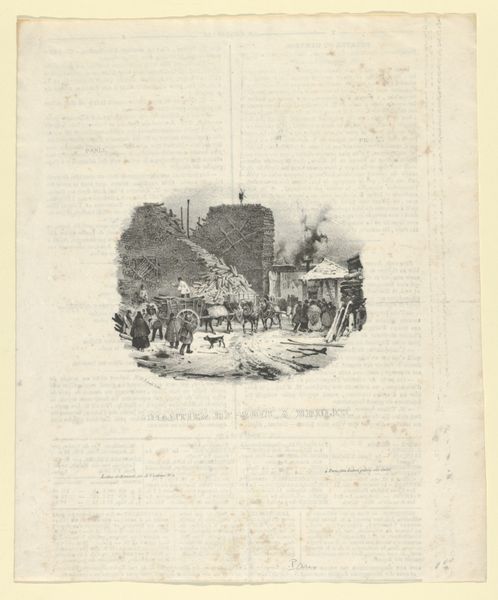
The Inagural Procession at Washington Passing the Gate of the Capitol Grounds 1861
0:00
0:00
print, woodblock-print, pencil, woodcut, wood-engraving, engraving
# print
#
landscape
#
woodblock-print
#
pencil
#
woodcut
#
united-states
#
cityscape
#
history-painting
#
academic-art
#
wood-engraving
#
engraving
#
realism
Dimensions: 10 3/8 x 9 1/8 in. (26.4 x 23.2 cm)
Copyright: Public Domain
Curator: Winslow Homer's 1861 wood engraving, "The Inaugural Procession at Washington Passing the Gate of the Capitol Grounds," captures a pivotal moment in American history. What strikes you about it? Editor: The sheer density of figures in the foreground. It feels chaotic, like a churning sea of faces. You get a sense of excited anticipation mixed with perhaps a little anxiety given the socio-political tensions of the time. Curator: Precisely. This print appeared in "Harper's Weekly," a widely circulated journal. Homer was working as an artist-reporter, documenting the events unfolding during the lead-up to the Civil War. It's interesting how the setting—the Capitol Building looming in the background—projects the symbolic weight of that day. Editor: And note the visual hierarchy, too. The elevated perspective emphasizes the powerful few within carriages and horseback—the political elite passing through as spectators swarm around, rendered with much less definition. The class dynamic seems clear and speaks to power structures of the day. Curator: I agree. We should also address that a notable number of the faces are obscured—whether by hats, shadow, or simple over-compression. It’s impossible to ignore what feels like intentional effacement, reflecting anxieties around identity during a time of national division. Who belongs, who is recognized, who gets to have a voice? Editor: That tension translates to the physical process too. Engravings were meticulously planned, yet the quick turnaround time meant sometimes sacrificing fine detail. The immediacy of print was powerful. Curator: Yes, the wood engraving allowed Homer's vision to reach a mass audience, shaping public perception in a very volatile political climate. And by using this bird's-eye view, Homer gave audiences a literal overview of democracy in action. Editor: Which is still important to interrogate. Homer captured more than just pageantry; he highlighted, in his own way, the inherent power dynamics that underscored the so-called union itself. Curator: Absolutely. Viewing this work through the lenses of power and representation gives us invaluable insight into how artists processed the fracture of the United States at that time. Editor: It urges a re-examination of which images were prioritized during wartime and which went unseen—and by whose agenda these depictions were constructed in the first place.
Comments
No comments
Be the first to comment and join the conversation on the ultimate creative platform.
